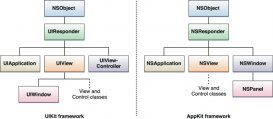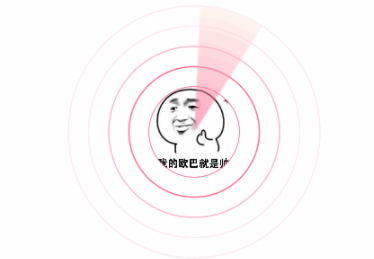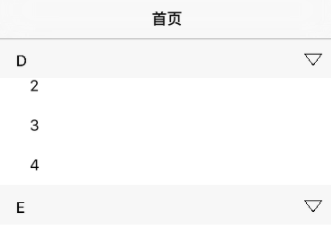接触Cocos2D有段时间了,今天特意研究了下Cocos2D坐标系中各种位置关系,anchor属性,CCNode坐标和地图坐标转换。
先看一段代码:
-(id) init
{
// always call "super" init
// Apple recommends to re-assign "self" with the "super" return value
if( (self=[super init])) {
CCTMXTiledMap *gameWorld = [CCTMXTiledMap tiledMapWithTMXFile:@"PositionText.tmx"];
[self addChild:gameWorld];
CGSize winSize = [[CCDirector sharedDirector] winSize];
CCLOG(@"gameWorld.mapSize.width:%.2f gameWorld.mapSize.height:%.2f",gameWorld.mapSize.width, gameWorld.mapSize.height);
CCLOG(@"gameWorld.tileSize.width: %.2f gameWorld.tileSize.height:%.2f", gameWorld.tileSize.width, gameWorld.tileSize.height);
CCLOG(@"winSize.width:%.2f winSize.height:%.2f", winSize.width, winSize.height);
CCSprite *pointSprite = [CCSprite spriteWithFile:@"point.png"];
[gameWorld addChild:pointSprite z:2 tag:1];
pointSprite.position = ccp(20,20);
pointSprite.anchorPoint = ccp(0.5, 0.5);
CCSprite *rectSprite = [CCSprite spriteWithFile:@"myrect.png"];
[gameWorld addChild:rectSprite z:1 tag:1];
rectSprite.position = ccp(20,20);
rectSprite.anchorPoint = ccp(0.5, 0.5);
}
return self;
}
1、加载地图:
CCTMXTiledMap *gameWorld = [CCTMXTiledMap tiledMapWithTMXFile:@"PositionText.tmx"];
2、获取手机屏幕大小
CGSize winSize = [[CCDirector sharedDirector] winSize];
3、地图格子数:
gameWorld.mapSize (10,10)
4、地图格子大小:
gameWorld.tileSize (20,20)
5、整个地图大小:
gameWorld.mapSize * gameWorld.tileSize;
当然这里所说的是地图格子是个正方形,非正方形也容易啦。
6、anchor属性
1) 添加一个精灵,这个精灵是个像素为1*1的红色图片,设置坐标为20,20,即在地图的第一个格子的右上角,设置anchorPoint为(0.5, 0.5)
2) 再添加一个精灵,这个精灵是个像素为20*20的蓝色图片,设置坐标为20,20,即在地图的第一个格子的右上角,同样设置anchorPoint为(0.5, 0.5)
运行效果是矩形精灵的中心和在点精灵的位置,即矩形精灵的锚点为第一个格子的右上角(20,20)坐标 处
去掉两个精灵的anchorPoint属性
运行效果和上面相同
设置rectSprite的anchorPoint为ccp(0,0)
运行效果是矩形精灵的左下角与点精灵重合。
设置rectSprite的anchorPoint为ccp(1,1)
运行效果是矩形精灵的右上角与点精灵重合。
同理设置ccp(0.5, 1) , ccp(1, 0.5)等
由上面可以得出:
1)anchorPoint属性默认为ccp(0.5, 0.5)
2)当设置(0,0)时是以左下角为锚点
3)当设置(1, 1)时是以右上角角为锚点
4)由此可以自己推论到底该把锚点设置在哪里
Cocos2D使用的是OpenGL坐标系
OpenGL坐标系:原点在左下角, X轴向右,Y轴向上
IPhone屏幕坐标系:原点在左上角,X轴向右,Y轴向下
很简单的判断方法:由于Cocos2D的坐标系的原点在左下角。所以精灵内部坐标原点也是左下角,即当anchorPoint为(0, 0)时即以左下角为锚点,为(1,1)时就以右上角为锚点,当然(0.5, 0.5)就是以精灵中心为锚点了。由此可以推算出-2,-3.... 2, 3.... 等值时精灵锚点坐标。
7、坐标转换
-(id) init
{
// always call "super" init
// Apple recommends to re-assign "self" with the "super" return value
if( (self=[super init])) {
CCTMXTiledMap *gameWorld = [CCTMXTiledMap tiledMapWithTMXFile:@"PositionText.tmx"];
[self addChild:gameWorld];
CGSize winSize = [[CCDirector sharedDirector] winSize];
CCLOG(@"gameWorld.mapSize.width:%.2f gameWorld.mapSize.height:%.2f",gameWorld.mapSize.width, gameWorld.mapSize.height);
CCLOG(@"gameWorld.tileSize.width: %.2f gameWorld.tileSize.height:%.2f", gameWorld.tileSize.width, gameWorld.tileSize.height);
CCLOG(@"winSize.width:%.2f winSize.height:%.2f", winSize.width, winSize.height);
CCSprite *pointSprite = [CCSprite spriteWithFile:@"point.png"];
[gameWorld addChild:pointSprite z:2 tag:1];
pointSprite.position = ccp(20,20);
//pointSprite.anchorPoint = ccp(0.5, 0.5);
CCSprite *rectSprite = [CCSprite spriteWithFile:@"myrect.png"];
[gameWorld addChild:rectSprite z:1 tag:1];
rectSprite.position = ccp(40,40);
rectSprite.anchorPoint = ccp(2, 2);
[self setIsTouchEnabled:YES];
}
return self;
}
- (void) registerWithTouchDispatcher {
[[CCTouchDispatcher sharedDispatcher] addTargetedDelegate:self priority:INT_MIN + 1 swallowsTouches:YES];
}
- (BOOL) ccTouchBegan:(UITouch *)touch withEvent:(UIEvent *)event {
CGPoint point = [touch locationInView: [touch view]];
CCLOG(@"Screen coordX: %.2f coordY: %.2f", point.x, point.y);
point = [[CCDirector sharedDirector] convertToGL: point];
CCLOG(@"OpenGL coordX: %.2f coordY: %.2f", point.x, point.y);
point = [self convertToNodeSpace: point];
CCLOG(@"CCNode1 coordX: %.2f coordY: %.2f", point.x, point.y);
point = [self convertTouchToNodeSpace: touch];
CCLOG(@"CCNode2 coordX: %.2f coordY: %.2f", point.x, point.y);
point = [[CCDirector sharedDirector] convertToUI:point];
CCLOG(@"UIView coordX: %.2f coordY: %.2f", point.x, point.y);
point = [rectSprite convertTouchToNodeSpaceAR:touch];
CCLOG(@"TouchAR coordX: %.2f coordY: %.2f", point.x, point.y);
return YES; CCNode
}
- (void) ccTouchMoved:(UITouch *)touch withEvent:(UIEvent*)event {
}
- (void) ccTouchEnded:(UITouch *)touch withEvent:(UIEvent*)event {
}
上面的代码添加了UIView的事件处理。由于屏幕和Cocos2D采用不同的坐标系,所以我们需要进行坐标转换。
1)首先获取屏幕坐标
2)将屏幕坐标转换为OpenGL的坐标
3)将OpenGL的坐标转换为Cocos2D的坐标。
从运行结果可以看出Node1和Node2打印出的坐标相同。因为Cocos2D给我们写了covertTouchToNodeSpace方法,可以看看它的源码:
- (CGPoint)convertTouchToNodeSpace:(UITouch *)touch
{
CGPoint point = [touch locationInView: [touch view]];
point = [[CCDirector sharedDirector] convertToGL: point];
return [self convertToNodeSpace:point];
}
至于为什么OpenGL和Node1输出既然相同,为什么还要使用convertToNodeSpace,由于能力有限,希望大牛们能给告诉我答案。
UIView输出的是将Cocos2D坐标转换为屏幕即quartz坐标。
4) convertTouchToNodeSpaceAR是将触摸点转换为相对于rectSprite的坐标
8、判断触摸点是否在制定的精灵上
- (BOOL) ccTouchBegan:(UITouch *)touch withEvent:(UIEvent *)event {
CGPoint point = [touch locationInView: [touch view]];
CCLOG(@"Screen coordX: %.2f coordY: %.2f", point.x, point.y);
point = [[CCDirector sharedDirector] convertToGL: point];
CCLOG(@"OpenGL coordX: %.2f coordY: %.2f", point.x, point.y);
point = [self convertToNodeSpace: point];
CCLOG(@"CCNode1 coordX: %.2f coordY: %.2f", point.x, point.y);
point = [self convertTouchToNodeSpace: touch];
CCLOG(@"CCNode2 coordX: %.2f coordY: %.2f", point.x, point.y);
//point = [[CCDirector sharedDirector] convertToUI:point];
//CCLOG(@"UIView coordX: %.2f coordY: %.2f", point.x, point.y);
CCLOG(@"%d", rectSprite.textureRect.size.width);
CGRect rect = [rectSprite textureRect];
rect = CGRectMake(0, 0, rect.size.width, rect.size.height);
CCLOG(@"orgX: %.2f orgY: %.2f width:%.2f height: %.2f",rect.origin.x, rect.origin.y, rect.size.width, rect.size.height);
point = [rectSprite convertTouchToNodeSpaceAR:touch];
CCLOG(@"TouchAR coordX: %.2f coordY: %.2f", point.x, point.y);
if(CGRectContainsPoint(rect, point)) {
CCLOG(@"You touched in the rectSprite");
}
return YES;
}
9、获取触摸的是哪个tile,并改变该tile.
CCSprite *rectSprite;
CCTMXTiledMap *gameWorld;
int speed = 10;
-(id) init
{
// always call "super" init
// Apple recommends to re-assign "self" with the "super" return value
if( (self=[super init])) {
gameWorld = [CCTMXTiledMap tiledMapWithTMXFile:@"PositionText.tmx"];
[self addChild:gameWorld];
CGSize winSize = [[CCDirector sharedDirector] winSize];
CCLOG(@"gameWorld.mapSize.width:%.2f gameWorld.mapSize.height:%.2f",gameWorld.mapSize.width, gameWorld.mapSize.height);
CCLOG(@"gameWorld.tileSize.width: %.2f gameWorld.tileSize.height:%.2f", gameWorld.tileSize.width, gameWorld.tileSize.height);
CCLOG(@"winSize.width:%.2f winSize.height:%.2f", winSize.width, winSize.height);
CCSprite *pointSprite = [CCSprite spriteWithFile:@"point.png"];
[gameWorld addChild:pointSprite z:2 tag:1];
pointSprite.position = ccp(20,20);
pointSprite.anchorPoint = ccp(0.5, 0.5);
rectSprite = [CCSprite spriteWithFile:@"myrect.png"];
[gameWorld addChild:rectSprite z:0 tag: 3];
rectSprite.position = ccp(40, 40);
rectSprite.anchorPoint = ccp(0, 0);
[self setIsTouchEnabled:YES];
}
return self;
}
- (void) registerWithTouchDispatcher {
[[CCTouchDispatcher sharedDispatcher] addTargetedDelegate:self priority:INT_MIN + 1 swallowsTouches:YES];
}
- (BOOL) ccTouchBegan:(UITouch *)touch withEvent:(UIEvent *)event {
CGPoint point = [touch locationInView: [touch view]];
point = [self convertTouchToNodeSpace: touch];
CCLOG(@"CCNode2 coordX: %.2f coordY: %.2f", point.x, point.y);
CGPoint tilePos = [self tilePosition:point];
if(tilePos.x == -1 || tilePos.y == -1) return NO;
CCTMXLayer *ly = [gameWorld layerNamed:@"Layer 0"];
if([ly tileGIDAt:tilePos] != 3) {
[ly setTileGID:0 at: tilePos];
}
return YES;
}
- (void) ccTouchMoved:(UITouch *)touch withEvent:(UIEvent*)event {
}
- (void) ccTouchEnded:(UITouch *)touch withEvent:(UIEvent*)event {
}
- (CGPoint) tilePosition:(CGPoint)pos {
CGPoint point;
CCTMXLayer *ly = [gameWorld layerNamed:@"Layer 0"];
if(ly== nil) {
CCLOG(@"Error: Layer not found!");
return ccp(-1, -1);
}
CGSize layerSize = [ly layerSize];
CGSize tileSize = [gameWorld tileSize];
int x = pos.x / tileSize.width;
int y = layerSize.height - pos.y / tileSize.height;
if((x >= 0) && (x < layerSize.width) && (y >= 0) && (y < layerSize.height)) {
point = ccp(x, y);
} else {
point = ccp(-1, -1);
}
if(point.x < 0) return ccp(-1, -1);
if(point.y < 0) return ccp(-1, -1);
if(point.x >= layerSize.width) return ccp(-1, -1);
if(point.y >= layerSize.height) return ccp(-1, -1);
CCLOG(@"%d, %d", x, y);
return point;
}
















